LED spotlights are a popular choice for lighting in living spaces, offices and smart homes. They provide excellent light quality, are energy-efficient and have a long service life.
To give you the best possible support when choosing your recessed spotlights, we have collected the 10 best tips for LED spotlights.
The following awaits you:
- Simply formulated but well-founded tips for selecting spots
- concrete application examples
- Best-practice solutions
- Comprehensive, additional service
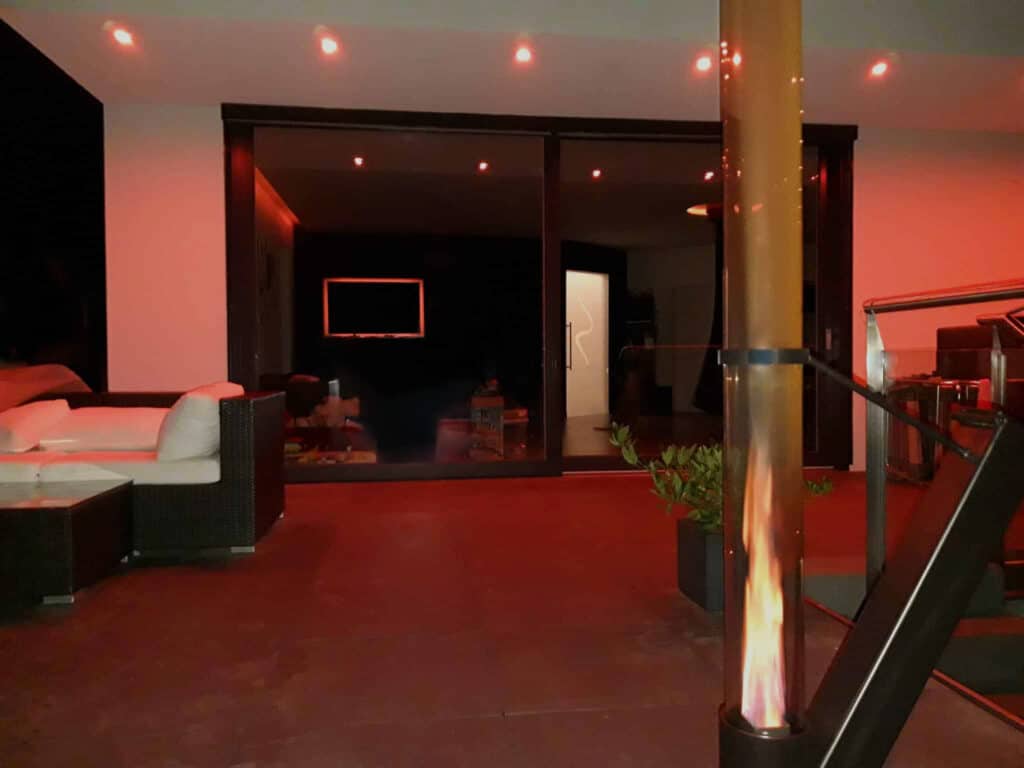
1. space and purpose of the lighting
First think about where and how the LED spotlights are to be used!
Rooms are used differently and there are different lighting requirements depending on the activity/application.
This ranges from the light colors and brightness to the special properties (e.g. IP protection class for damp rooms, outdoor areas) of the ceiling spots.
Basically, there are always several options and therefore no right or wrong! Therefore, put your wishes and needs first. Also bear in mind that room usage and furnishings may change and take this into account in your planning.
2. light color: warm white, variable white or multicolored?

LED technology offers many more lighting options. Recessed LED spotlights with a predefined white tone or variable color temperature are also available, as are fully colored versions.
The color temperaturemeasured in Kelvin (K), has a significant influence on the atmosphere of the room. Warm white light (2700K-3000K) creates a cozy, calming atmosphere for living rooms and bedrooms. Neutral white (3500K-4000K) and cool white light (5000K-6500K) has anactivating character, supports concentration and productivity and is more suitable for work areas (kitchen, office, hobby room). You can find everything you need to know about changeable white in the article: LED CCT!
The light colors (RGBW) are predestined for atmospheric accents in all colors, dynamic light scenes and give the interior design that special something.
These 4 technologies are available to you:

Recessed LED spotlight with a single-color, preset color temperature. This cannot be changed and warm white is usually selected. Of course, the spotlight is dimmable!

The more these spots are dimmed, the warmer the color temperature becomes, up to super-warm white (similar to candlelight or a campfire atmosphere)

as with Dim to Warm, except that the color temperature and brightness can be continuously adjusted separately with an additional dimming channel.

independently controllable and by means of additive color mixing almost limitless combinations of colors for creative and unique lighting solutions.
3. color rendering (CRI)
The color rendering index (CRI) indicates how well or close to natural a light source reproduces the colors of the illuminated objects/people and is to be understood as a quality criterion! It is often stated that a CRI of 80 is sufficient for most applications. We at Emilum firmly reject this! Conversely, this means that 20% of the colors are reproduced incorrectly and artificially!
We therefore clearly recommend a CRI of 90 or higher! Although this is at the expense of luminous flux (because the LED produces 10% less lumen as a result), almost all colors are reproduced correctly and the difference is clearly visible! Natural lighting takes precedence, quality over quantity!
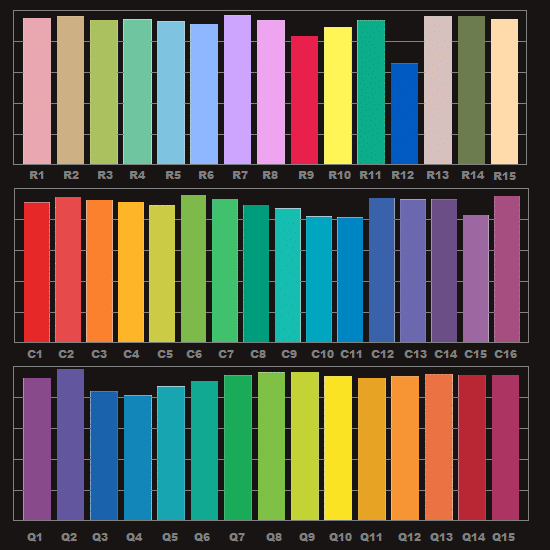
4. luminous flux (lumen)
The luminous fluxmeasured in lumens (lm), indicates how much light a lamp emits. Higher lumen values mean more brightness. But be careful not to compare apples with apples here, as there are a number of points that have an impact on luminous flux. Take these into account in your assessment of luminous flux. Conversely, don’t forget that luminous flux is only one of your criteria and that the criteria below should also be regarded as quality criteria (the values were validated in our in-house lighting laboratory!).
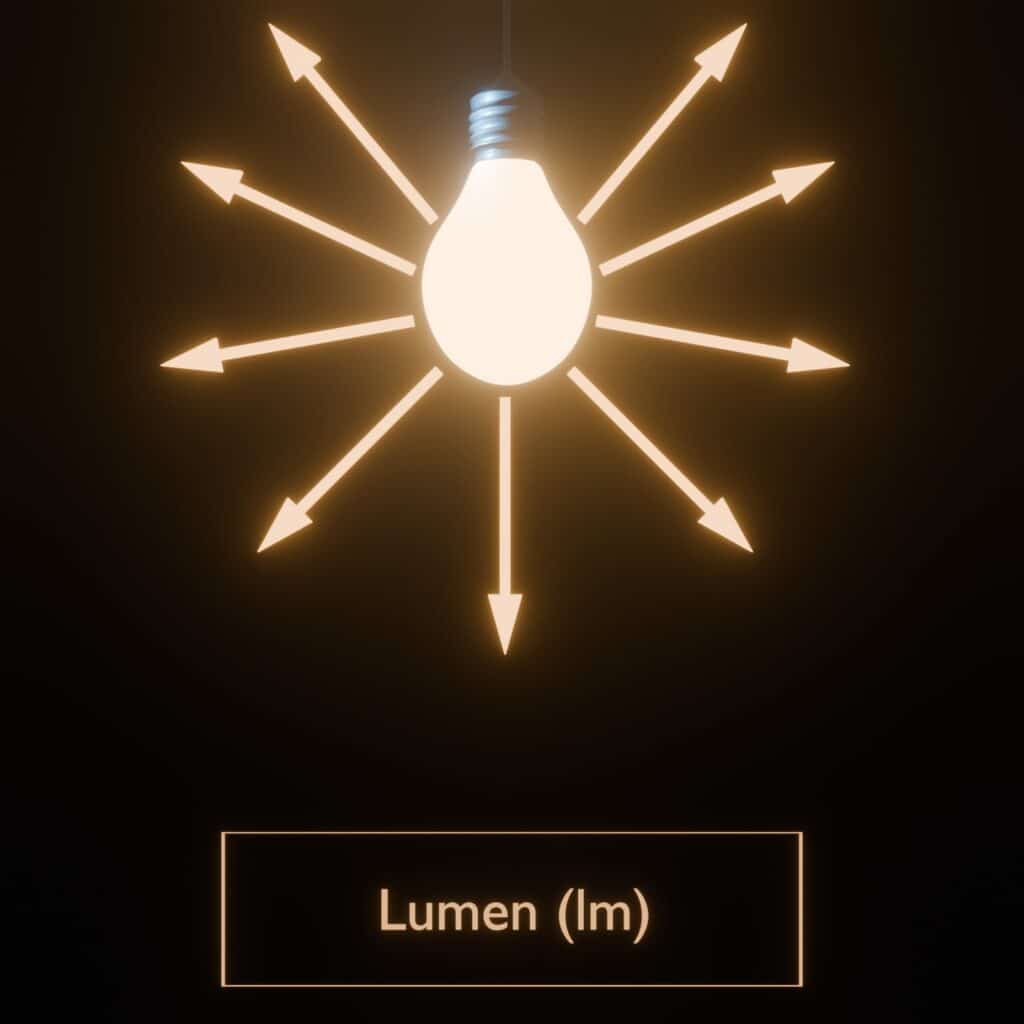
| Initial basis | Comparison value | Lumen difference | |
| Color rendering index | CRI 80 | CRI 90 | -10% |
| Color temperature | neutral to cold (4000 – 6500K) | Warm white (2200 -2700K) | -5% to 15% |
| Spot temperature | 25°C | 75°C | -5% to -10% |
| Beam angle | without lens (100-120°) | with lens < 100° | – 10% |
Example:
An LED spot with 4000K, CRI 80, without lens that was measured directly after switching on (therefore still cool) will have better values for both lumens (lm) and luminous efficacy (lm/W) than a spot with 2700K, CRI90, 60° beam angle that was measured when heated. Nevertheless, the second ceiling spot will generally be the better choice,
How many LED spotlights do you need per m2?
This depends on the spot used and the room category/usage. Our free tool is available here to help you:
How many lumens per square meter
5. beam angle
The beam angle determines the angle at which the light is emitted from the light source. A wide beam angle (approx. 60 degrees) is very suitable for general room lighting, while a narrow beam angle (less than 40 degrees) is used for accent lighting.
Recessed LED spotlights with 120 degrees may be tempting at first, but are generally unsuitable as far too much light is emitted into non-essential areas. In addition, it is important to remember that spotlights are positioned in a narrow grid and the light beams overlap very quickly, so there is no need for such wide angles.
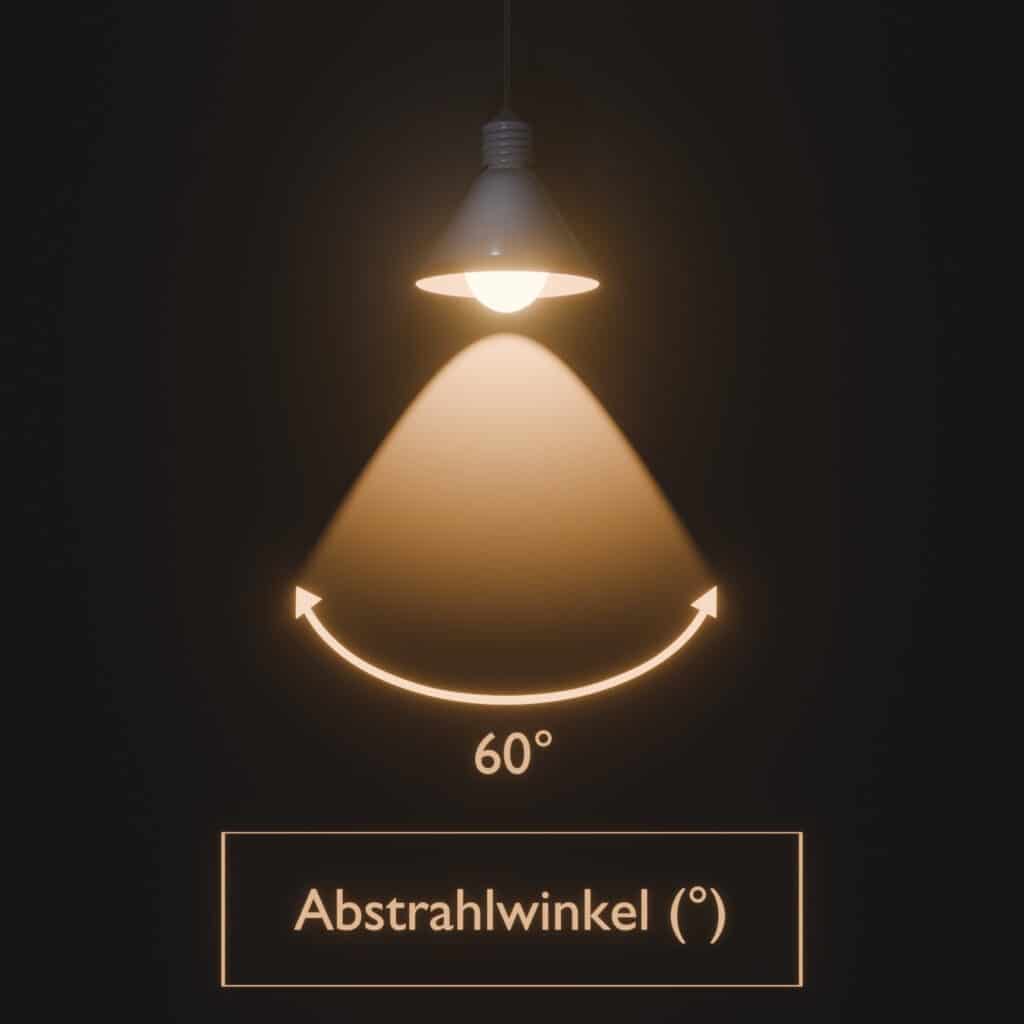
| Beam angle in degrees [°] | 35° | 40° | 50° | 60° | 70° | 100° | 120° |
| illuminated area [m²] | 1,9m² | 2,6m² | 4,3m² | 6,5m² | 9,6m² | 27,9m² | 58,9m² |
| Light cone diameter [m] | 1,58m | 1,82m | 2,33m | 2,89m | 3,5m | 5,96m | 8,66m |
| Illuminance [lx] | 446lx | 342lx | 220lx | 154lx | 114lx | 58lx | 41lx |
6. installation depth
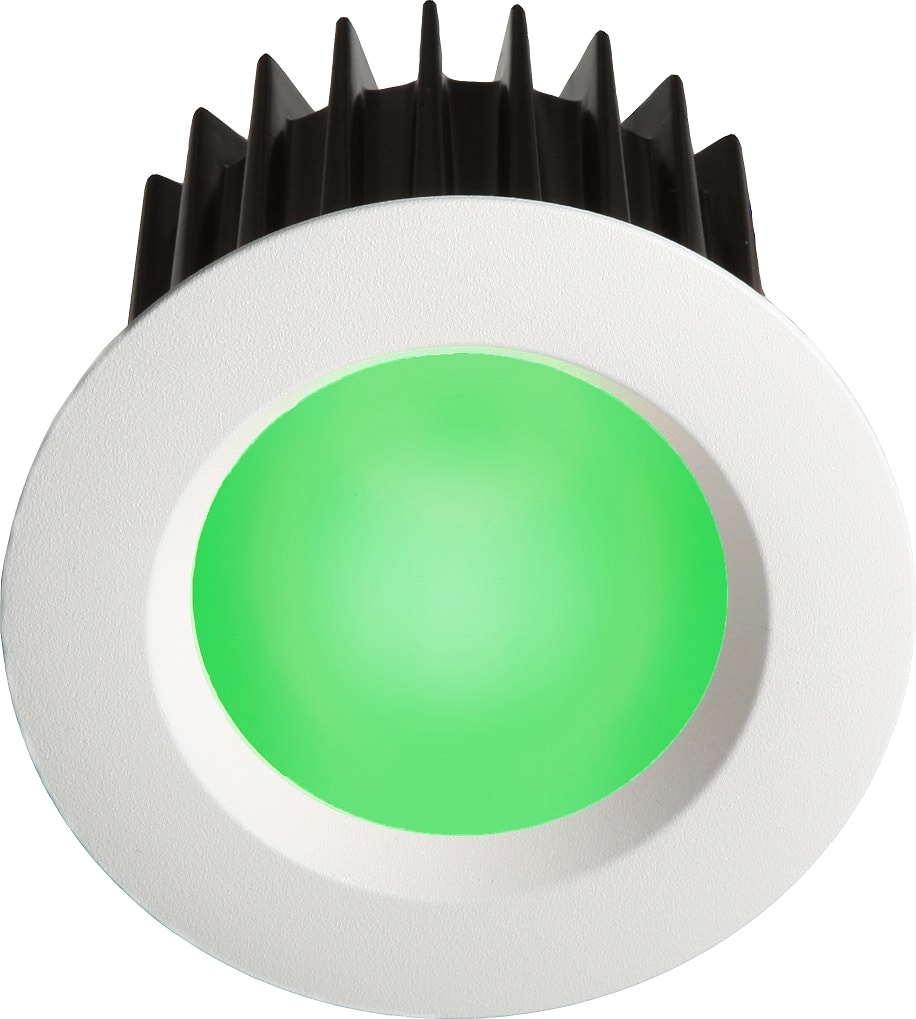
The installation depth of the LED spotlights is an important factor, especially with suspended ceilings or limited space. Make sure in advance what space is available to you.
Flat recessed LED spotlights are available for particularly confined installation situations. As smaller heat sinks are used for this, the output is reduced. If these were operated at too high an output (e.g. 8 watts or more), the temperature would rise too much and lead to premature ageing and, in the worst case, to a defect.
As an alternative for a shallow installation depth, surface-mounted LED lights are also available. These spots are surface-mounted on the ceiling and represent a more striking design feature. Choose the right product for you depending on your aesthetic preferences and installation requirements.
7. Suitable dimmers for the spotlights
Clarify which dimming method the recessed spotlight supports. For example, our 24V LED spots are optimized for LED PWM dimmers. Incidentally, both are the unofficial standard, i.e. you can rely on different manufacturers and their respective advantages without hesitation. In addition, you have the option of replacing individual products if necessary and, above all, expanding/changing your lighting in the future is much easier.
The dimmer interface to your smart home system must also be taken into account. Here too, open standards(DMX lighting control, DALI) are preferable to ensure a future-proof system with long-term availability. Incidentally, all common smart home systems offer DMX or DALI, or at least a gateway via which these standards can be addressed!
Incidentally, the choice of supply voltage has a significant influence on the quality of the dimming(flicker, linearity, min. dimming level, …) You can find out more about this in the 24V vs. 230V section.
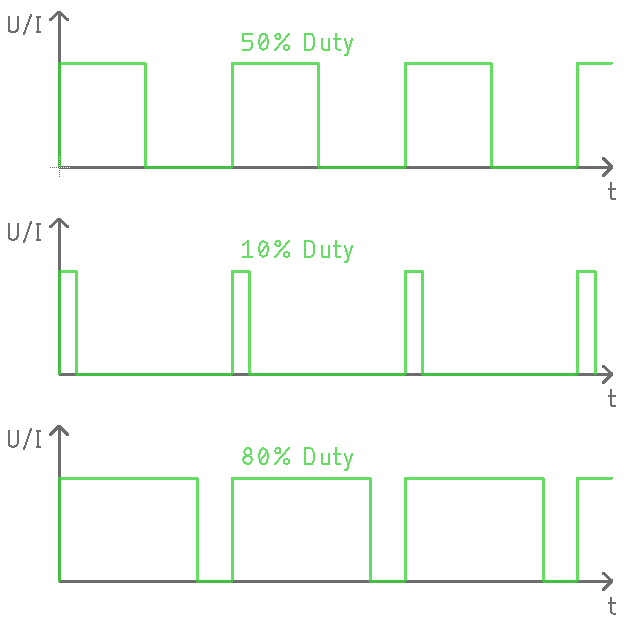
8. additional functions:
The recessed LED lights also have numerous other features. Consider these features according to the areas of application of the spotlights and also evaluate them for possible future adaptations of the rooms/furnishing of your living spaces.
- swivel LED spotlights: The position of the light beams can be easily adapted and optimized at a later date. Tiltable spotlights are very popular for accent lighting (pictures, works of art, etc.), for interior design (e.g. the monotony of a corridor is broken up when the light beams are alternately aligned with the wall) and for sloping ceilings.
- IP protection class: indicates the degree of protection against the ingress of solid (e.g. dust) and liquid foreign bodies, i.e. how tight the spotlight is. Pay particular attention to using IP44 or higher in damp rooms such as bathrooms or outdoors. An even higher protection rating is recommended for garden spotlights.
- Interchangeable fronts and covers: Can’t decide whether you want your spotlight in white, black or another color? Then recessed lights with interchangeable fronts are the right choice for you. This means that the design of the spotlights can be adapted to your interior design at a later date if the furniture changes.
- Safety: Are the spots protected against polarity reversal?
- Overload-protected: Our ceiling spotlights, for example, are protected against overload, i.e. if you accidentally turn both color channels of a tuneable white spotlight to 100%, the spotlight protects itself! If such a circuit is not included, the LED spotlight will very quickly become defective, or you will only have 50% of the brightness of the two channels available from the outset.
9. energy efficiency / luminous efficacy
Pay attention to the energy efficiency of the LED spotlights. A high luminous efficacy (efficiency) means that more lumens per watt (lm/W) are generated, which leads to lower energy costs.
The lower power loss also results in lower temperatures, which in turn improves the service life.
We would like to remind you once again that it is important that the comparison does not lag behind, so pay attention to and evaluate the points as already explained in the luminous flux category (CRI, color temperature, degradation, …). Luminous efficacy is therefore only part of the evaluation and in our opinion quality criteria should be given priority!

10. price-performance ratio
As with any new purchase, price is an issue. You should therefore compare the price-performance ratio of LED spotlights. Pay attention to the total costs over the service life, including energy consumption, maintenance and replacement. High-quality recessed LED spotlights score points for their features and quality with an excellent price-performance ratio.
The 3 bonus tips for LED spotlights
To provide you with really comprehensive support when selecting LED spots, we will give you 3 extra points along the way
11 Warranty, customer service and support
Check the manufacturer’s warranty conditions and support. Does the manufacturer provide customer service by providing further information(tutorials, best-practice examples, calculation tools, …) and what feedback does it receive via its Google reviews?
Does the manufacturer only advertise the quality of its products or is it actually so convinced of its products that it voluntarily extends the statutory warranty? We are, which is why Emilum offers a 5-year guarantee on its LED spotlights.
12. 24V vs. 230V LED spotlights
|
230V Spot |
24V Spot |
|
| Dimming process |
230V dimmer Difference between leading edge and trailing edge phase cut-off |
PWM dimmer Pulse width modulation Explanation |
| Minimum dimming level | Depending on the spot, usually 15-20% | Independent of the spot, below 0.1% possible |
| Flickering due to ripple control signal | Depending on the spot, sometimes also with branded products | No |
| Differences in production batches | Often different dimming behavior, as complex electronics are installed | Same dimming behavior |
| Safe handling | Risk of electric shock when touching the 230V! | 24V: no danger if touched |
| Service life | Lower service life due to greater losses and more sensitive electronics | Longer service life |
| Voltage drop to the spots | Irrelevant | Please note |
| Cost of the dimmer | Comparatively high | Inexpensive |
13. line waste
A voltage drop of 1-3V (volts) is irrelevant in a 230V system, but should definitely be taken into account with 24V. In the case of lower quality spots, this also leads to differences in brightness, as the spots furthest away have less voltage available and therefore affect the light output.
As a special feature, we have all 24V LED spots and 24V LED luminaires in such a way that they always emit the same luminous flux even with voltage tolerances of -5% to +10%! Consistent light quality regardless of the position in the chain, that’s a promise!
We also offer you our free voltage drop calculator. Especially for LED spot cabling, it helps you to select the right cables and, if necessary, to adjust the power supply unit!
Which LED spotlights are the best?
The question “Which LED spotlights are the best?” The choice depends on various factors, including the intended use, the nature of the room and personal preferences. There is no one-size-fits-all answer to this question, but to provide you with the best possible advice, we have created this detailed article and also provide you with a clear summary of our 24V recessed spotlights and spotlights:
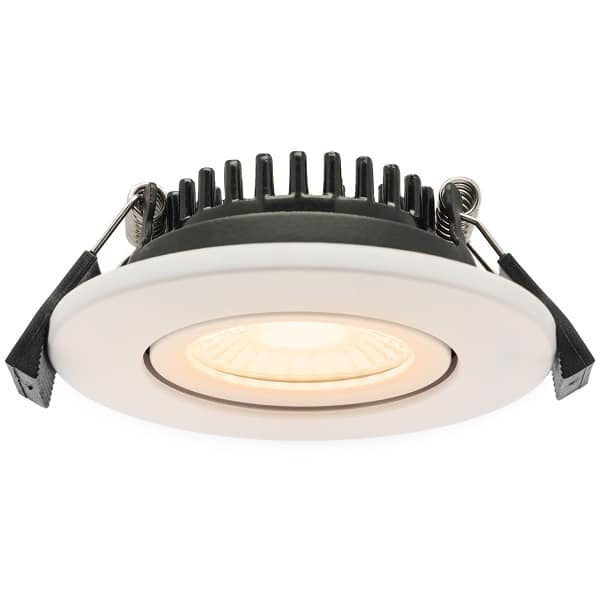 | 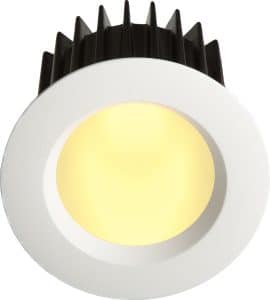 | 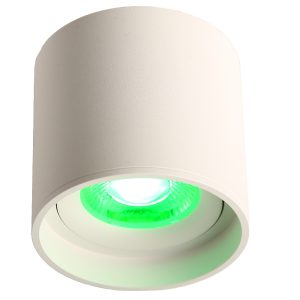 | 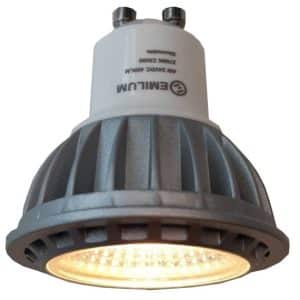 |  |
|
| Spannung (Volt) | 24V (+10%, -5%) | 24V (+10%, -5%) | 24V (+10%, -5%) | 24V (+10%, -5%) | 24V (+10%, -5%) |
| Leistung (W) | 5W | 10W | 8W | 4W | 5W - 7W |
| Farbwiedergabeindex (CRI) | typ. 93 | typ. 94 | typ. 93 | typ. 92 | typ. 92 |
| Varianten | 2700K, 3000K, CCT, RGBW, D2W | 2700K, CCT, RGBW | 2700K, CCT, RGBW | 2700K | 2700K, 3000K, CCT, RGBW, D2W |
| dimmbar | Ja (PWM) | Ja (PWM) | Ja (PWM) | Ja (PWM) | Ja (PWM) |
| Leuchtmittel und Einbaurahmen | ja | ja | ja | nein | nein |
| Leuchtmittel tauschbar | nein | nein | nein | ja | ja |
| Einbautiefe | gering | mittel | nicht relevant | mittel (abhängig von Einbaurahmen) | gering |
| Lochmaß | 68mm | 68mm | nicht relevant | > 60mm (abhängig von Einbaurahmen) | abhängig vom Einbaurahmen |
| schwenkbar | ja | nein | ja | abhängig von Einbaurahmen | abhängig vom Einbaurahmen |
| Fronten / Einbaurahmen tauschbar | ja (auch nachträglich) | nein | nein | ja | ja (auch nachträglich) |
| Frontfarben | Weiß, Schwarz, Gold, Chrome, Alu gebürstet | Weiß, Schwarz (andere Farben auf Anfrage) | Weiß, Schwarz (andere Farben auf Anfrage) | abhängig von Einbaurahmen | abhängig vom Einbaurahmen |
| Verpolungsgeschützt | Ja | Ja | Ja | Ja | Ja |
2700K, 3000K = warm white; CCT = tuneable white, RGBW = full color; D2W = Dim to warm
The best LED spotlights are those that best meet your specific requirements and preferences. Consider intended use, light quality, energy efficiency, control options, voltage, additional functions and design. A careful selection of these criteria will help you find the ideal LED spotlights for your needs. Should you have any further uncertainties, please do not hesitate to contact us directly.
By considering these ten points, you can ensure that you choose the best LED spotlights for your individual needs. Look out for high-quality products that meet your requirements and enjoy the benefits of modern and energy-efficient lighting.
You can find matching LED spotlights in our online store
Many more guides, tutorials and more
Did you like the article on the 10 best tips for LED spotlights and are you still interested in the topic? We would like to recommend our service area. There you will find numerous other interesting articles (e.g. converting lumens to watts, light units, …), extensive tutorials (e.g. the light-emitting diode, DMX bus, …), free tools(online lighting design) and much more:
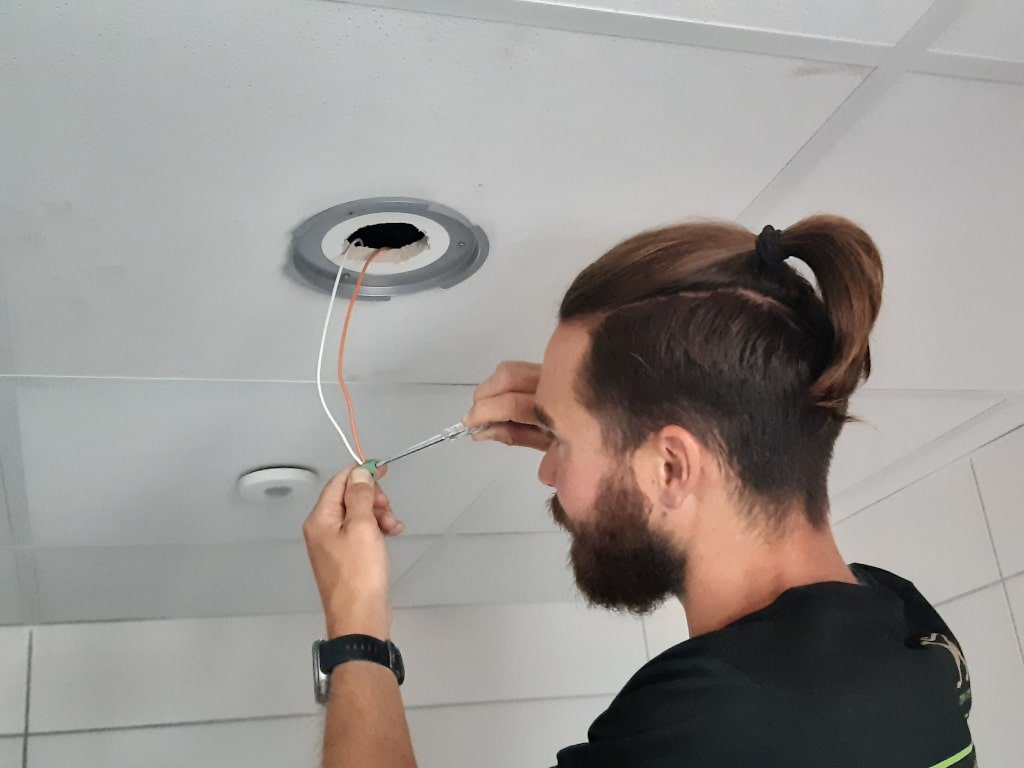
popular posts on our blog:
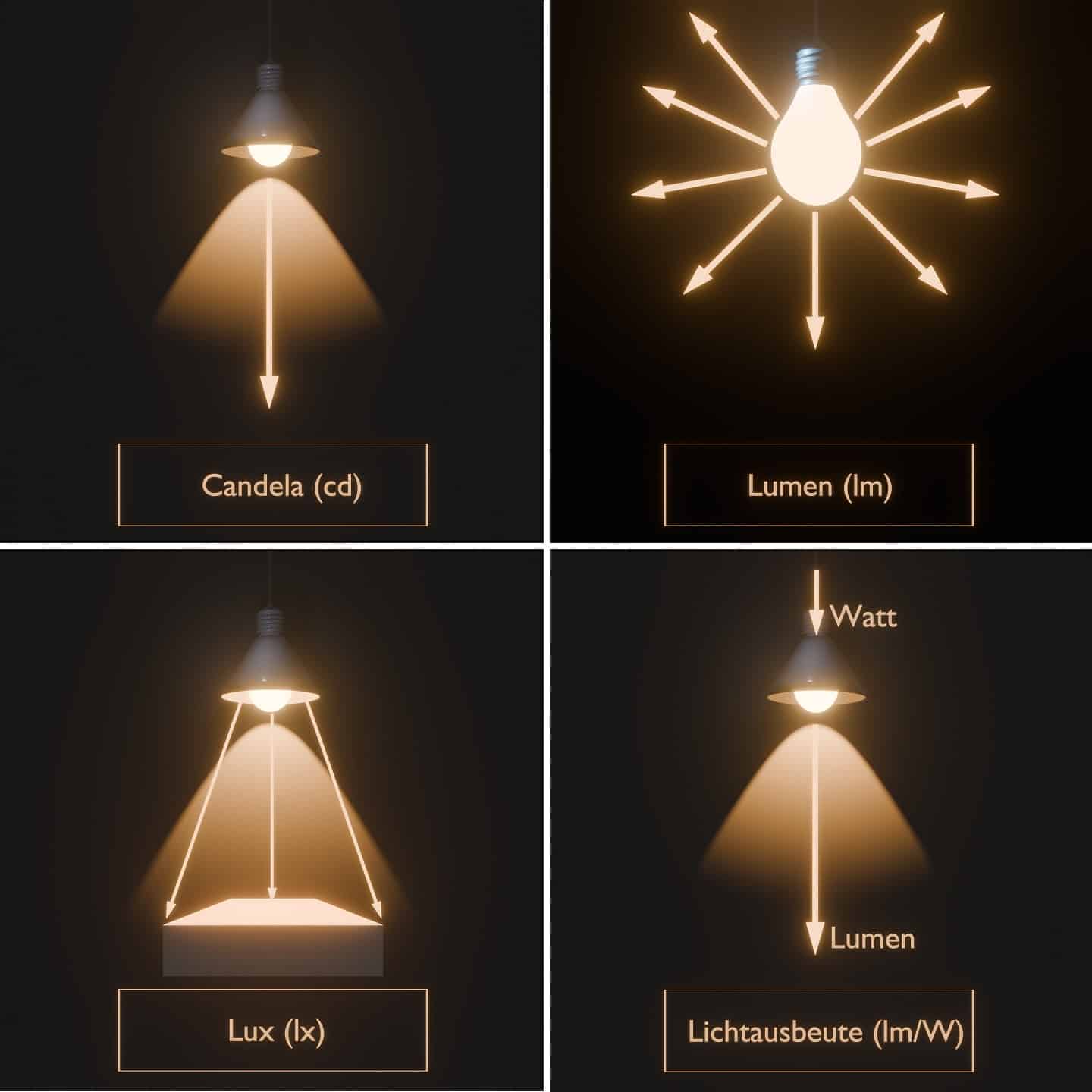
When it comes to light, there are numerous quantities and units, which are explained here in a simple and graphically appealing way.
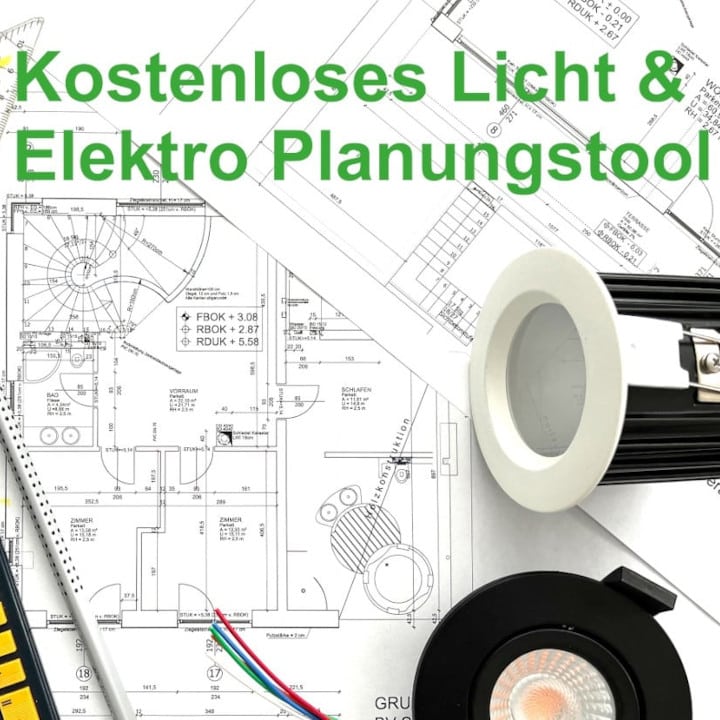
Numerous tools are combined here in one tool: determine number of spots, calculate power, voltage drop calculator, and much more
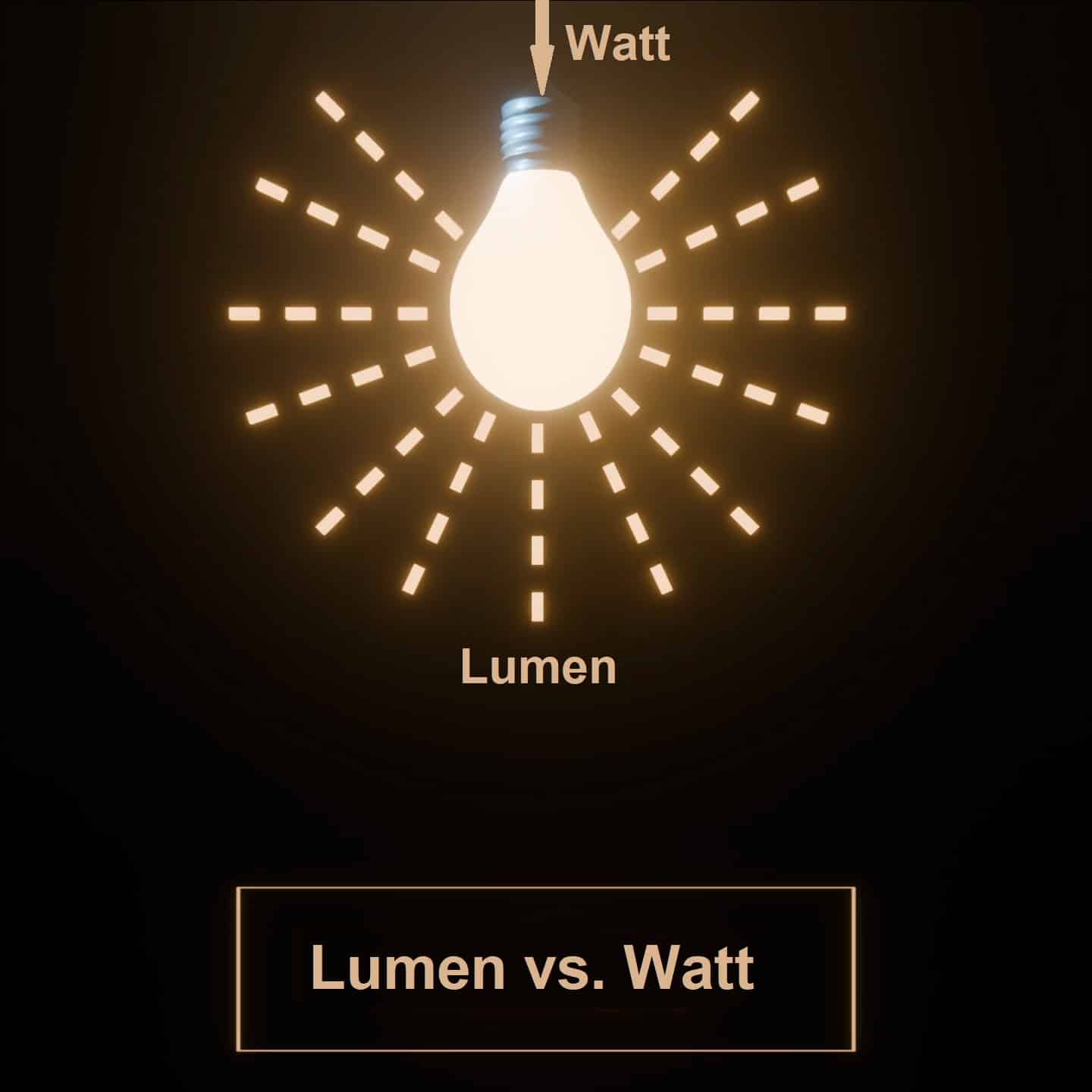
Lumen(unit of luminous flux) and watt are often equated. Here you can find out not only the differences, but also what to look out for in each case.
